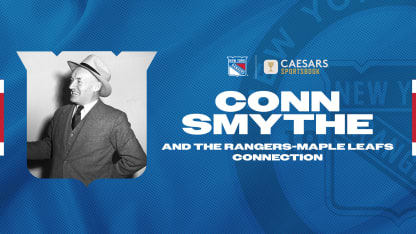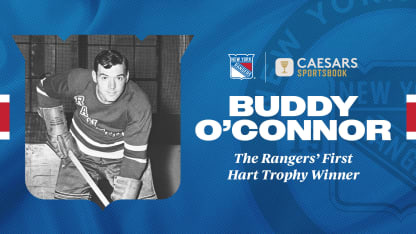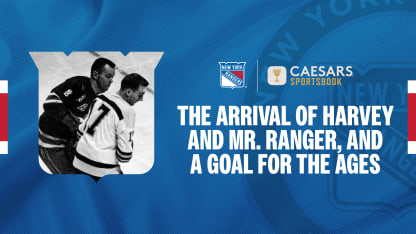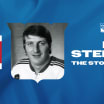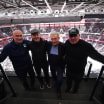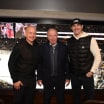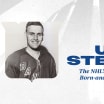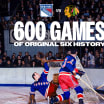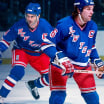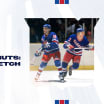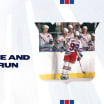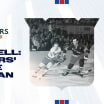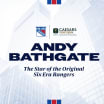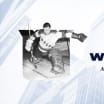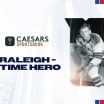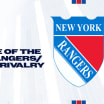Today, the name Conn Smythe is most associated with the trophy that is awarded every year to the Most Valuable Player of the Stanley Cup Playoffs.
Nearly a century ago, however, Smythe was a well-known coach and manager in the hockey world. And he would make a significant impact on the evolution of two of the NHL’s most iconic franchises, the New York Rangers and Toronto Maple Leafs.
A native of Toronto, Smythe was coaching the University of Toronto during the 1925-26 season. During that time, he was tabbed by Madison Square Garden vice president Col. John S. Hammond to be the general manager of a new NHL team in New York for the following year. As Smythe began to scout and recruit players who could potentially join the new team, one major development that took place in the world of professional hockey was the disbandment of the Western Hockey League at the end of the 1926 season.
Hammond and Smythe turned their attention towards the players from the WHL as the starting point for building their roster. Several of the players whose contracts they purchased for the new team were from that league; among them were forwards (and brothers) Bill Cook and Fred “Bun” Cook and defenseman Leo Bourgeault (who played with the Saskatoon Crescents), goaltender Hal Winkler (from the Calgary Tigers), and forward Frank Boucher, who played with the Vancouver Maroons and whose NHL rights were originally owned by the Boston Bruins. However, at the recommendation of the Cook brothers, who had played against Boucher in the WHL, Smythe acquired Boucher’s rights from Boston.
The Rangers held their first Training Camp at Ravina Rink in Toronto in mid-October of 1926. Although Smythe and Frank Carroll – who Smythe named as the Rangers’ Head Coach – were leading the camp, change was on the horizon. While Smythe had assembled a strong roster, a rift was developing between him and Hammond.
Part of the disconnect between the two men was centered around a forward named Babe Dye, who had played seven seasons in the NHL prior to 1926-27 and had led the league in goals in three of the previous five seasons. The Toronto St. Patricks were looking to sell Dye, and Hammond was interested in acquiring him. Smythe, however, was not.
On October 17, 1926, Dye was sold by Toronto to the Chicago Black Hawks. Ten days later, Smythe’s tenure as the Rangers’ General Manager was over, as Hammond decided to replace him with one of the grandest figures in hockey history, Lester Patrick.
Although Smythe had been replaced, the Rangers organization still invited him to the franchise’s first game on November 16, 1926 at MSG. When Smythe met Tex Rickard – the owner of MSG and the founder of the Rangers – he told Rickard several things. First, Smythe – confident in the team he put together – said that the Rangers were going to beat the defending Stanley Cup Champion Montreal Maroons that night; he would be correct.
Second, Smythe mentioned to Rickard that the organization still owed him $2,500 from the contract he initially agreed to with the Rangers. Rickard gave Smythe the $2,500, which led to a chain of events that altered NHL history.
Smythe used that money to bet on a college football game, and he won that bet. Then, he took his winnings and used it to bet on the Rangers defeating the Toronto St. Patricks in the Rangers’ second-ever game in franchise history. The Rangers won that game, 5-1, giving Smythe approximately $10,000.
In short order, he used that money to help purchase the Toronto St. Patricks franchise, and ultimately became the team’s General Manager and Head Coach. Then, in February of 1927, the franchise was renamed from the Toronto St. Patricks to the Toronto Maple Leafs.
Over several years, Smythe reshaped the Maple Leafs roster. In the process, he built a team similar to the one he had left behind with the Rangers (and added some of the players who he had originally brought to New York years prior). The Blueshirts defeated the Maple Leafs in the Semifinals of the 1929 playoffs – ending their first playoff appearance under Smythe and the Maple Leafs name.
By the 1931-32 season, the Rangers and Maple Leafs were among the best teams in the NHL. Rivaling the Rangers’ top line of Fred “Bun” Cook, Frank Boucher, and Bill Cook was the Maple Leafs’ “Kid Line” of Busher Jackson, Joe Primeau, and Charlie Conacher. Hall of Famers such as King Clancy, Hap Day, and Red Horner anchored Toronto’s defense, matching the Rangers’ excellent defense corps of Ivan “Ching” Johnson, Earl Seibert, and Ott Heller. In goal, John Ross Roach and Lorne Chabot – traded for each other in a deal between the Rangers and Maple Leafs in 1928 – were starring for their new teams.
The Maple Leafs beat the Rangers in the 1932 Stanley Cup Final, giving Smythe his first Stanley Cup and bringing the trophy to Toronto in the first year of Maple Leaf Gardens’ existence. The following season, the Rangers returned the favor, defeating Toronto in four games to win their second Stanley Cup in franchise history.
The Rangers and Maple Leafs have not played in the same division for over half a century and have not faced each other in a playoff series since 1971. But they are bonded by their status as two of the NHL’s Original Six franchises and one Hall of Fame executive who, in less than one calendar year, made an indelible mark on both teams that is still evident nearly 100 years later.

